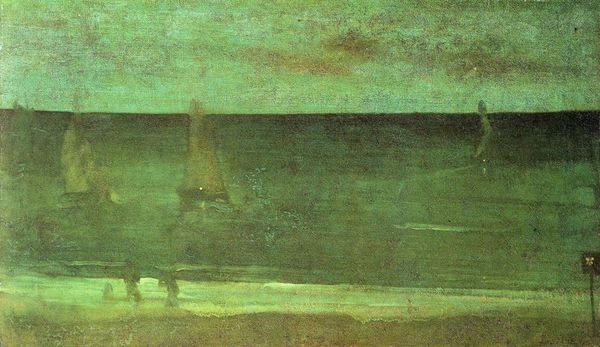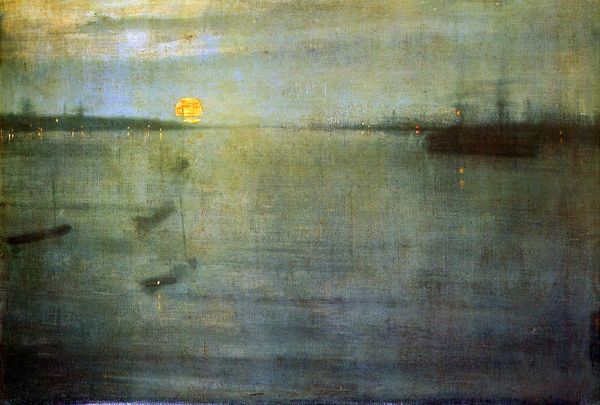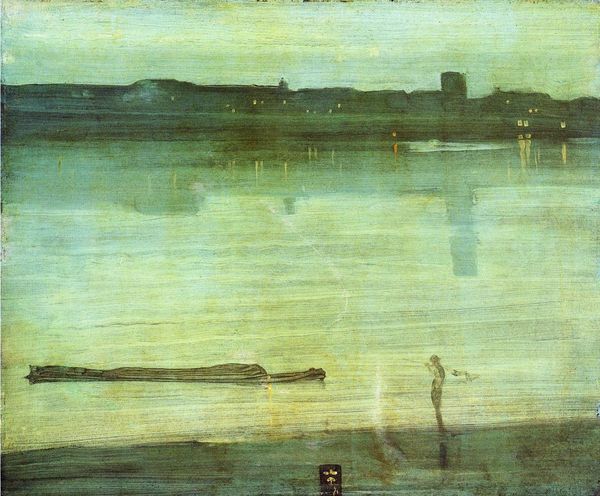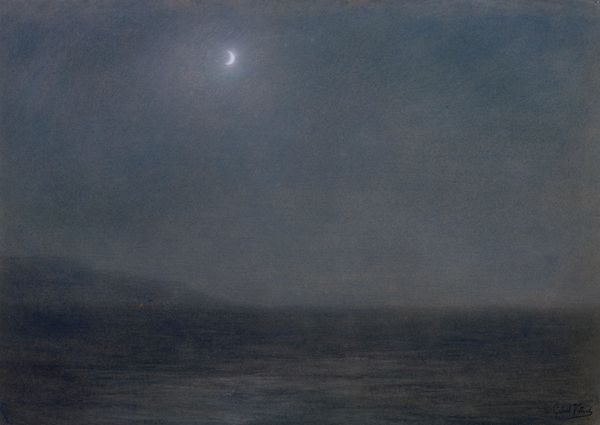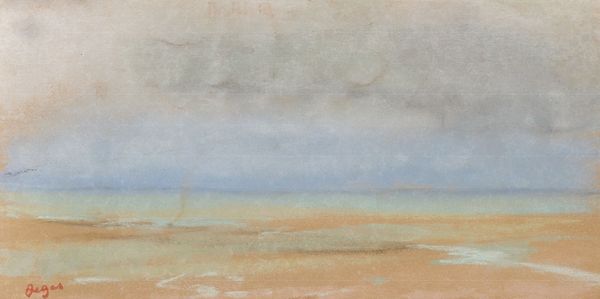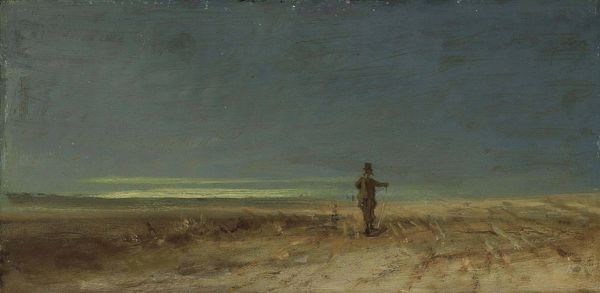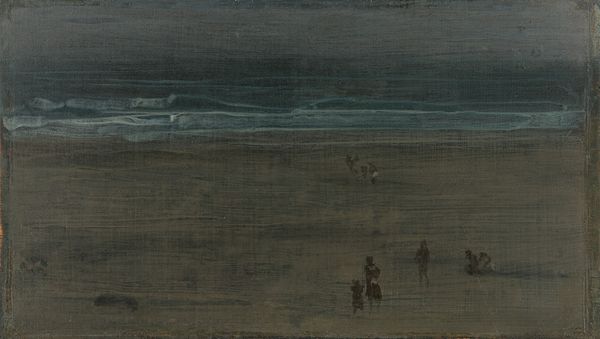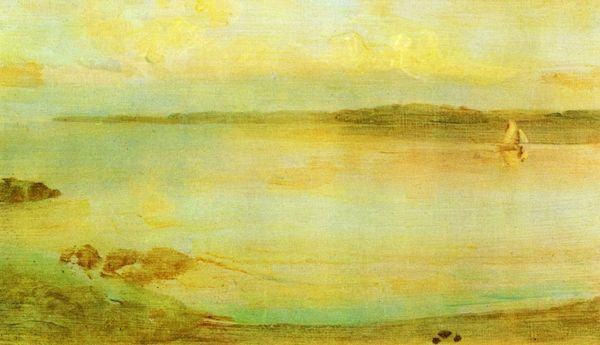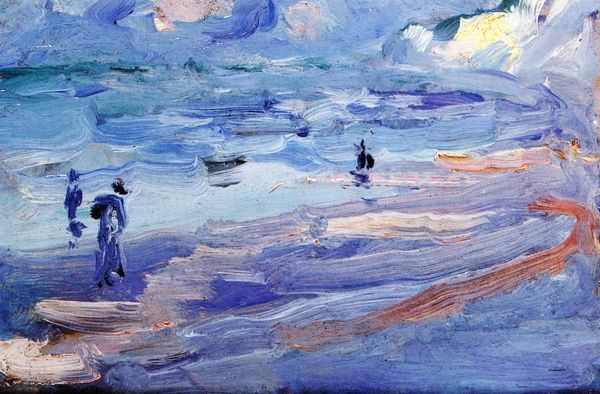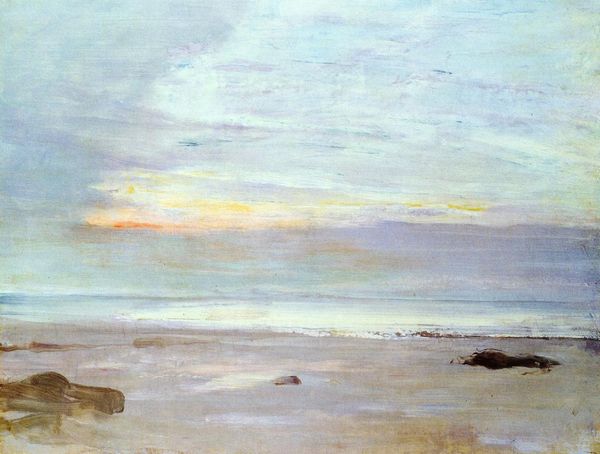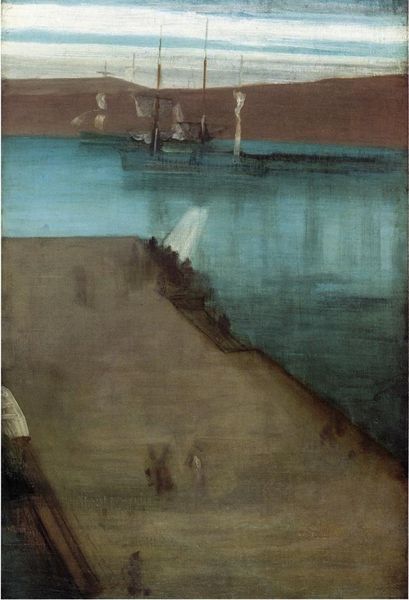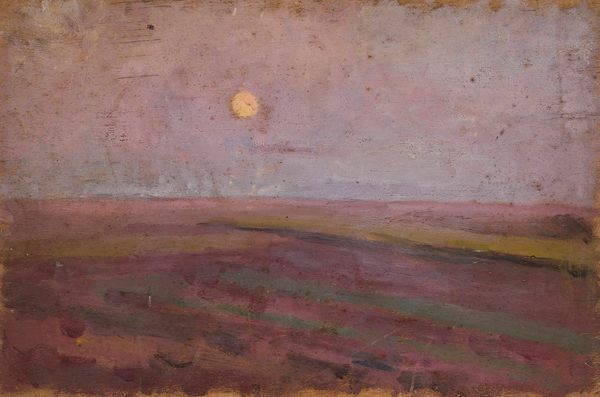
painting, oil-paint
#
portrait
#
boat
#
ship
#
painting
#
impressionism
#
oil-paint
#
landscape
#
ocean
#
line
#
sea
Dimensions: 50 x 76 cm
Copyright: Public domain
James McNeill Whistler created this painting, "Harmony in Blue and Silver: Trouville", using oil on canvas. Notice the lone figure standing at the edge of a beach, gazing out toward a sailboat on the water. The sea has always been a powerful symbol. For some, it represents the origin of life, a space of fecundity and creation. Others may see it as a symbol of chaos or the subconscious. In ancient Greece, for example, the sea was embodied by Poseidon, a god of immense power and unpredictable moods. Consider the Romantic painters like Caspar David Friedrich, who placed figures in nature to reflect on the sublime, evoking awe and insignificance in the face of nature. Whistler uses these figures to engage with his viewers on a deep subconscious level. This use of the lone figure shows the cyclical progression of art, and how symbols resurface, evolving and accruing new meanings across history.
Comments
No comments
Be the first to comment and join the conversation on the ultimate creative platform.

